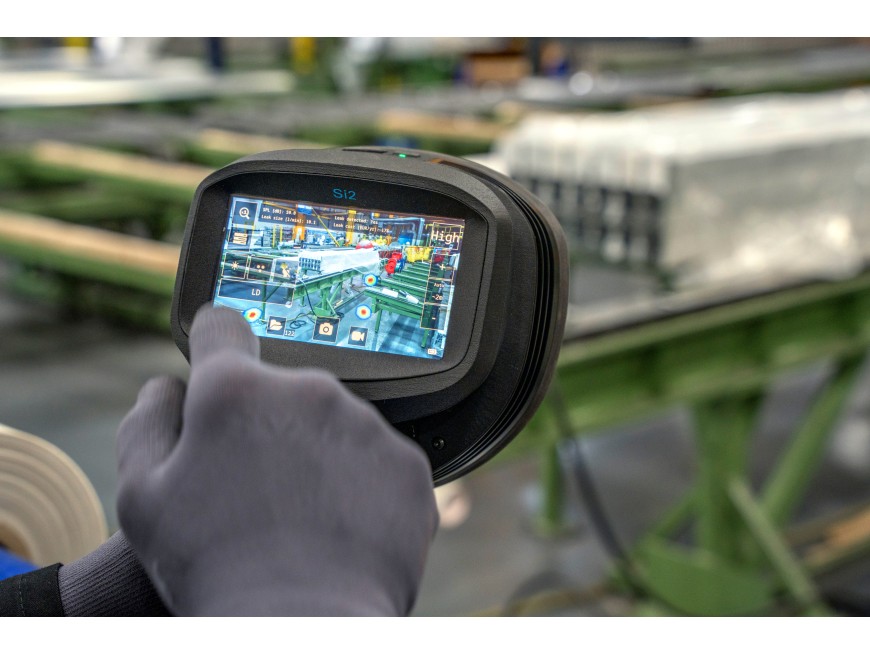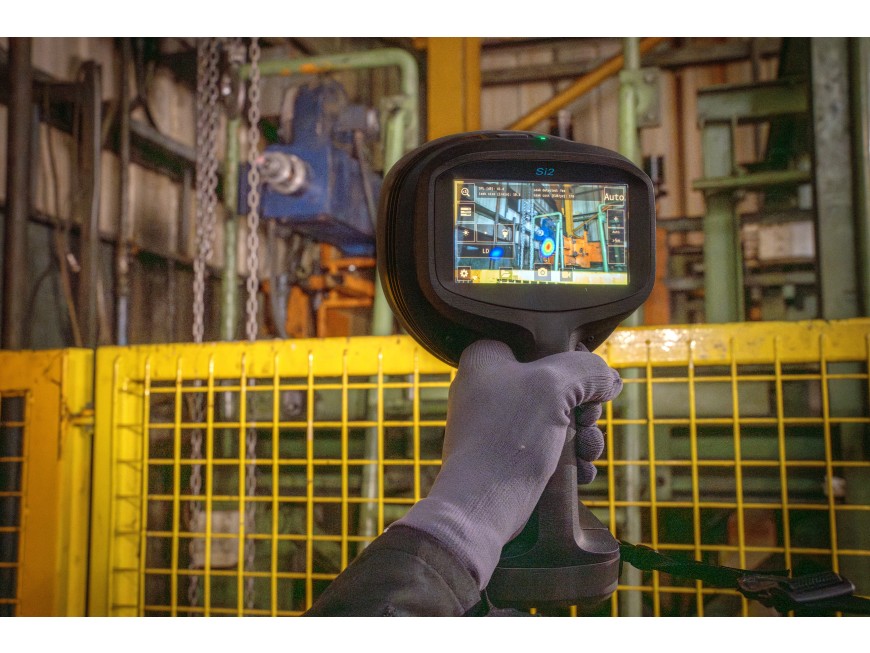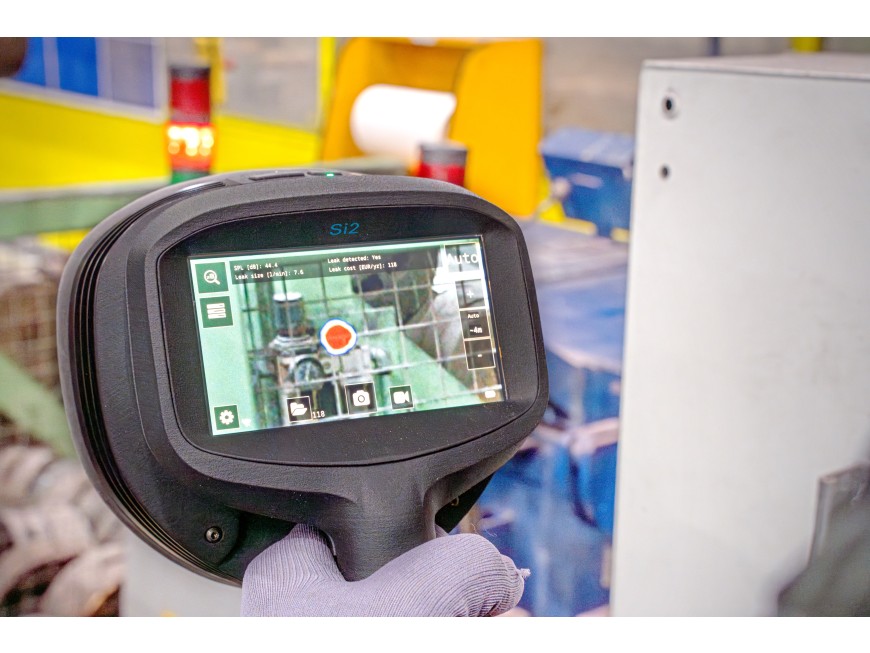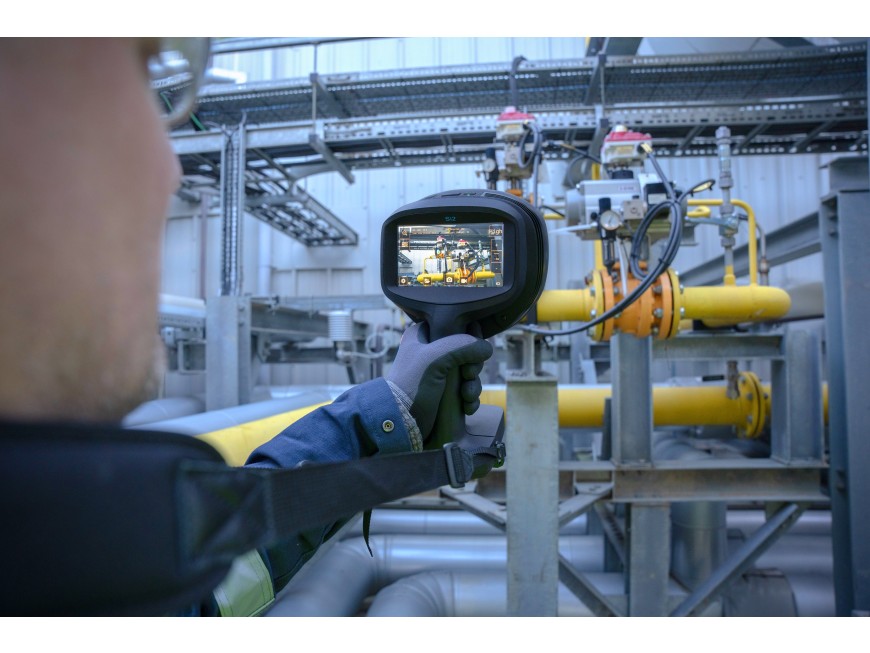What is Acoustic Imaging?
Acoustic imaging is a non-destructive testing method that uses sound waves to create images of the internal structure of an object or environment. It is used in a wide range of industries, including aerospace, automotive, and manufacturing, to identify defects, locate flaws, and monitor the condition of equipment.
How Acoustic Imaging Cameras Detect Compressed Air and Gas Leaks
Acoustic imaging cameras detect compressed air leaks and Gas leaks by analyzing the sound waves generated by the escaping air. As the air or gas rushes out of the leak, it creates a unique sound signature that is captured by the camera. The camera then creates a visual representation of the sound waves, enabling operators to quickly identify the location and size of the leak.
The Accuracy and Precision of Acoustic Imaging Cameras
Acoustic imaging cameras can precisely locate, and accurately measure compressed air leaks. They can locate the exact location of pinhole-sized leaks, enabling operations to quickly locate and repair leaks in order to minimize energy waste and reducing risks to safety. They can also measure leaks as small as 0.004 L/min so that users can prioritize repairs.
Most leaks create turbulence which in turn creates ultrasonic noise. An acoustic imaging camera, such as the FLIR Si2, pinpoints the source of that noise and overlays that “hot spot” onto a visual camera picture in real time. By imaging the noise source, we can improve ultrasound inspection time by approximately 90 percent. Inspectors can also quickly scan large areas with the camera from a safe distance without touching machinery or shutting down the line. The FLIR Si2 sees through background noise commonly found in industrial environments to produce precise imagery. By listening, recognizing, analyzing ultrasonic sounds, and ultimately understanding what different sounds mean, an acoustic imager allows operators to instantly and accurately pinpoint the source of an air leak.
Adopting acoustic imaging as part of a predictive maintenance routine, professionals can identify issues fast, cut excess costs, and keep manufacturing operations going.
To detect very high frequency sound sources, the acoustic camera must have a multitude of microphones—preferably quite close to each other. Otherwise, issues of spatial aliasing will occur, meaning erroneous results and sound sources displayed at invalid locations. It is tempting to include higher frequency support in the acoustic camera for marketing purposes, as higher numbers often look better. The reality is that using frequencies that are too high will not provide any benefits and instead make the performance worse.
REDUCE INSPECTION TIME BY UP TO 90%
In most factories, compressed air systems are one of the largest electricity cost centers. That’s why it’s important to detect compressed air leaks and equipment inefficiencies as early as possible - and fix them immediately. But finding air leaks isn’t easy to do using traditional inspection methods, such as soap bubble testing, which take significant time.
The Advantages of Using Acoustic Imaging Cameras in any industry
Acoustic imaging cameras offer several advantages for detecting compressed air leaks in industries. These advantages include:
Increased Energy Efficiency
Compressed air leaks can be a major source of energy waste in pulp and paper mills. By quickly identifying and repairing leaks using acoustic imaging cameras, industries can improve their energy efficiency and reduce their energy consumption. This results in lower operating costs and a reduced carbon footprint.
Improved Productivity
Compressed air leaks can also impact the productivity of industries by reducing the efficiency of pneumatic equipment. By identifying and repairing leaks quickly, factories can improve the performance of their equipment and increase their productivity.
Cost Savings
Detecting and repairing compressed air leaks using acoustic imaging cameras can also result in significant cost savings for pulp and paper mills. By reducing their energy consumption and improving the performance of their equipment, manufacturers can lower their operating costs and increase their profitability.
To better visualise the total cost savings an acoustic imaging camera, such as the FLIR Si2 offers, FLIR provides a complimentary return-on-investment (ROI) calculator. This online tool enables the pulp and paper industry to estimate the potential energy savings from detecting and repairing air leaks, in relation to the cost of the camera itself.
Enhanced Safety
The presence of compressed air leaks in industries poses a significant safety hazard, especially when they are not detected and repaired promptly. The danger associated with leaking hoses or connectors cannot be understated. In the event of a damaged and pressurized hose, an outward 'explosion' can cause severe injury. This sudden release of pressure can trigger the engagement or disengagement of a machine, putting both the operator and nearby individuals at risk of harm.
Acoustic imaging cameras enable mills to quickly identify and repair leaks, reducing the risk of safety hazards and improving the overall safety of their operations.
In summary, the advantages of using acoustic imaging cameras in pulp and paper mills include increased energy efficiency, improved productivity, cost savings, and enhanced safety. By investing in acoustic imaging technology, mills can optimize the performance and safety of their operations while reducing their environmental impact and operating costs.






